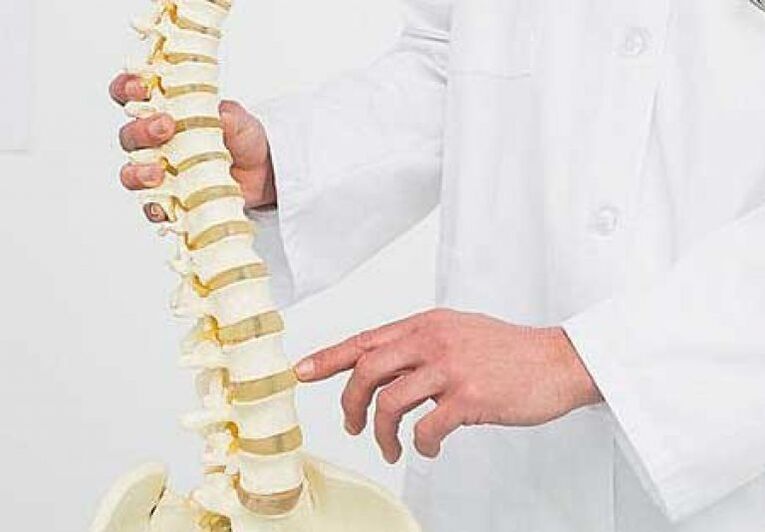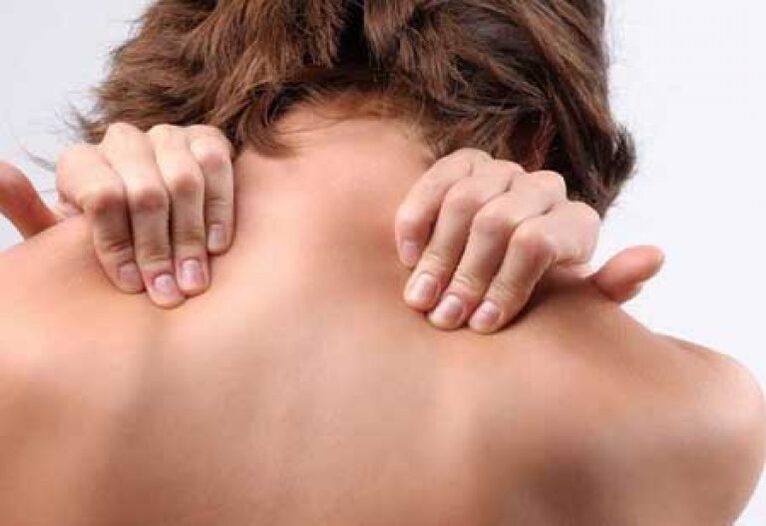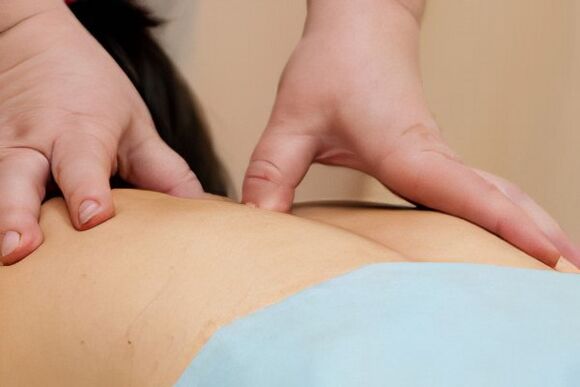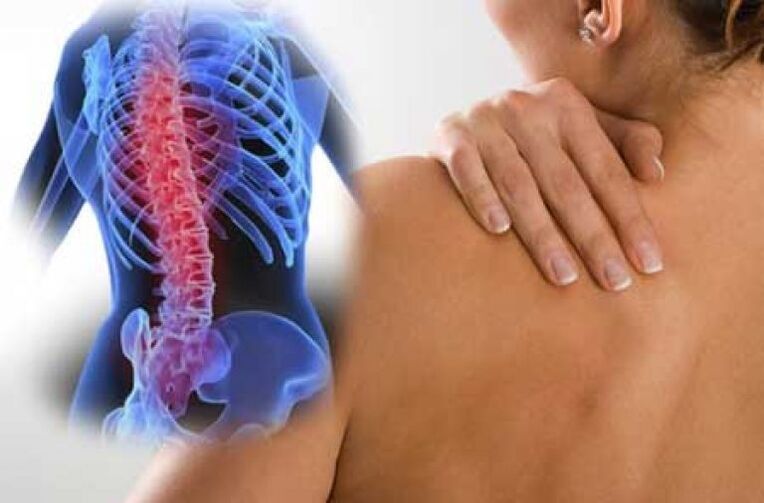With osteochondrosis, the bone and cartilage tissue of the vertebrae of the cervical, lumbar or thoracic spine are affected. Pathology often leads to disability and in advanced cases, for example, with the formation of an intervertebral hernia, requires surgical intervention. In this material we will tell in detail about osteochondrosis of the thoracic spine, its symptoms and treatment.
Thoracic osteochondrosis - what is it?
Thoracic osteochondrosis is a degenerative-dystrophic change in the vertebrae of the thoracic spine with destruction of joints, intervertebral discs and cartilage. Compared to the cervical and lumbar spine, the thoracic region is less mobile and more durable due to its connection with the ribs.

This makes it less susceptible to external influences. However, with sedentary work, weak spinal muscles, concomitant injuries, the risk of osteochondrosis of the thoracic spine is high.
The risk factors are:
- high loads on the back - weight lifting, pregnancy, wearing high heels, flat feet;
- sedentary lifestyle;
- rachiocampsis;
- back injury;
- incorrect posture;
- hereditary predisposition;
- nervous tension.
The development of thoracic osteochondrosis leads to thinning of the intervertebral discs between the vertebrae, the appearance of an intervertebral hernia, abrasion of the cartilaginous membrane of the spinal joints, pathological growth of bone tissue, outgrowths - osteophytes form on them.
As a result of such changes, compression of blood vessels and nerve fibers, damage to the spinal cord (myeloid ischemia, myelopathy) can occur. Another serious complication of the disease is an intervertebral hernia.
Symptoms of thoracic osteochondrosis, photo

With osteochondrosis of the thoracic spine, symptoms often appear and aggravate under the influence of loads, with sudden movements, for example, when twisting the torso, tilting.
It can be a dull or aching ache that occurs between the shoulder blades, accompanied by chest tightness. If the lower ribs are displaced, then there is posterior rib syndrome, when a sharp pain is felt in the shoulder blade and lower chest.
When probing the spine in the area of \u200b\u200bthe affected vertebrae, local pain is felt - at the site of exposure.
Compression of nerve fibers causes symptoms such as impaired sensitivity at the ends of pinched nerves, changes in tendon reflexes (knee and heel).

Internal organ dysfunction can occur as the nerve roots located in the vertebrae of the thoracic region are responsible for the functioning of the liver, heart, kidneys, lungs, pancreas and intestines.
Other possible manifestations of osteochondrosis are sexual dysfunction, difficulty breathing, as well as pain in the area:
- mammary glands;
- chest and heart;
- hypochondrium - left or right;
- stomach and intestines;
- esophagus and pharynx.
Osteochondrosis in the thoracic vertebrae is manifested by two types of pain:
- Dorsago - a pronounced, stabbing, sharp pain between the shoulder blades and in the ribs, aggravated by trying to turn or change the position of the body. This symptomatology occurs during exacerbations of the disease.
- Dorsalgia - occurs gradually and lasts 1-3 weeks. The pain is dull, unspoken and localized in the spine at the level of the thoracic region, its intensity increases with a deep breath and inclination. It is accompanied by muscle spasms above and below the painful area, a feeling of lack of air.
Dorsalgia is often worse at night and when the body is in one position for a long time.
What to do with an exacerbation of osteochondrosis of the chest region?

Exacerbation of osteochondrosis can lead to physical overload (sports, hard work), hypothermia, severe stress or fatigue, lifting heavy objects. Acute pain can be accompanied by:
- Headaches resembling the intensity of migraine attacks;
- nausea;
- Dizziness;
- great weakness;
- loss of mobility;
- labored breathing.
Dorsago pain that occurs during an exacerbation of osteochondrosis of the thoracic spine is difficult to eliminate on its own. You should not choose painkillers without consulting a specialist, since self-medication can provoke serious complications.
The first course of action for acute pain is to call an ambulance or contact a neurologist. With an aggravation of a person, they are hospitalized, and in a hospital they remove the pain syndrome and control the further condition. Analgesics and local anesthetics (injections, tablets, ointments) are used to relieve pain.
General therapeutic measuresand the rules for the aggravation period are as follows:
- compliance with bed rest and minimal activity;
- take only the medicines prescribed by the doctor;
- physiotherapy and light self-massage;
- Physical therapy;
- balanced nutrition.
When dorsago is caused by an intervertebral hernia, medication is indicated, wearing a corset, physical therapy, and in the case of large sizes, surgery is the only treatment. It is carried out after a thorough diagnosis and the exclusion of other pathologies with similar symptoms.
Tactics of treatment of osteochondrosis of the chest region
With lesions of the chest, as in osteochondrosis of the cervicothoracic spine, treatment is symptomatic. Of the drugs are prescribed:
- Non-steroidal anti-inflammatory drugs;
- analgesics, which can also be from the NSAID group;
- Local pain relievers in the form of gels, creams, ointments and patches;
- muscle relaxants for back muscle spasms;
- Vitamin and mineral complexes that contribute to the restoration of ligaments and bone tissue;
- antidepressants.
An important component of treatment are chondroprotectors - preparations based on glucosamine or chondroitin - they contribute to the restoration of cartilage tissue and are taken for a long period of time, for six months or more.
The most effective means containing these two compounds.
AdditionallyTreatment methods of thoracic osteochondrosis:
- Physiotherapy - shock wave, laser, magnetic, UV irradiation, electrophoresis;
- Physical therapy;
- Massage has a warming effect, increases the intensity of metabolism in the paravertebral and articular tissues, reduces increased muscle tone;
- acupuncture - acupuncture;
- Acupressure - tactile action on biologically active points;
- healthy eating.

With osteochondrosis of the thoracic spine, therapeutic exercises are performed 2-3 times a day. The exercise program is put together individually by the doctor treating you. Gymnastics can be both preventive and therapeutic to strengthen spinal and shoulder muscles, restore the natural curves of the spine and help shape posture.
You can start doing this only after overcoming the pain syndrome. Basically, all exercises have movements that are reminiscent of those that a person does in everyday life, so that the muscles gradually strengthen during the training without overstraining.
Prevention of thoracic osteochondrosis
The nature of the profession often creates conditions for the development of osteochondrosis. For people who do heavy physical work or spend the whole working day sitting, it is important to pay attention to their posture and regularly perform exercises to strengthen the back muscles.
It makes sense to warm up and massage yourself several times during the working day.
To prevent osteochondrosis of the thoracic spine, excess salt, sugar, spices, sweet carbonated drinks, spicy and fried foods should be excluded from the diet.
Preference is given to natural foods without preservatives and colorings, vegetables, fruits, cereals and other cereals, lean meat and fish, dairy products, sufficient water. It is necessary to maintain a normal weight, not to forget about moderate physical activity and not to abuse coffee and alcoholic beverages.
The position of the body during sleep is important - you should sleep on your back, on a dense, hard mattress. The initial discomfort disappears as soon as the vertebrae return to their correct position.
Compliance with all preventive recommendations allows the back to live a healthy, beautiful and pain-free life.

















































